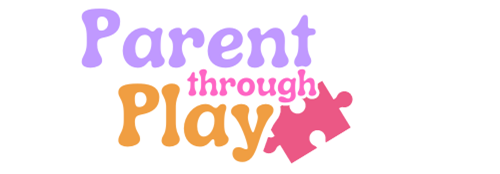Turning Potty Time into Play Time
Potty training can feel like a daunting milestone—but what if you could turn it into a game? For toddlers, play is more than just fun—it’s how they learn, process emotions, and gain confidence. By weaving playful elements into potty training, you can transform it from a power struggle into a giggle-filled adventure.
Play Your Way to Potty Success
Young children thrive when they feel in control, and play gives them that power. Making potty time part of their imaginary world can ease anxiety and boost enthusiasm. Get creative! Use hands on crafting play to create a Potty Princess or Potty Prince crown together. Use glitter, stickers, and paper to craft a royal accessory they get to wear while sitting on their “throne.” Suddenly, the bathroom becomes their kingdom!
The Toy Trade-Off: Buying Toys as Potty Rewards
It’s common for parents to promise a toy as motivation: “Go potty and we’ll get you a new toy!”
While this can be incredibly motivating in the short term, there are some important pros and cons to consider.
On the positive side, a toy can be a powerful incentive—especially if your child has their eye on something special. It can mark a major milestone, like their first successful full day in undies or staying dry through the night. These larger rewards can reinforce a sense of accomplishment and build confidence.
However, the downside of using store-bought toys as regular potty rewards is that it can escalate quickly. Toddlers are smart. If they learn that every potty trip earns a new toy, suddenly you’re bargaining for every bathroom break—and your wallet might start to feel it. It also shifts the focus from intrinsic motivation (feeling proud and independent) to external reward (“What do I get this time?”).
A healthier middle ground? Use toys as milestone rewards, not every time. For daily progress, try a sticker chart where your child earns stars or stickers for successes. After a certain number, they unlock a bigger reward, like a new book, an activity with mom like baking a cake, or a fun outing such as a visit to the zoo. This approach teaches patience, goal-setting, and delayed gratification—all valuable life skills, even at age 2 or 3.
Setting the Stage for Play and Potty Time
Whilst potty training, its a good idea to set up play zones with quick access to the potty. Move activities to easy-to-clean surfaces like tile, hardwood, or even outdoors if weather allows. Have the potty nearby—whether it’s a training toilet or a seat insert in the bathroom. Keep a stash of clean clothes, wipes, and disinfectant nearby.
Make potty runs a game. Create a code word or phrase with your child – something like “There’s a monkey in my tummy! and let the race begin! Who can make it to the potty first, your toddler or their plush dinosaur? These silly moments help take the pressure off and build positive associations.
Accidents Happen—Here’s What to Do
Let’s be honest: even with games, stickers, and magical crowns, accidents will happen and frustrations can come to the service with both parents and toddlers. The key is to acknowledge them without shame. Do your best to keep your cool. Toddlers take cues from us – if we react calmly, they will too.
At the same time, be mindful of rewarding effort versus success. While it’s important to celebrate trying, over-praising every attempt (even those with no actual potty use) can muddy the message. Celebrate progress, not just participation, to keep the momentum going.
Play and potty training go hand in hand. When you bring imagination, laughter, and creativity into the bathroom, your child is more likely to feel confident and capable. Whether it’s dancing into the bathroom, wearing a glittery crown, or shouting “There’s a monkey in my tummy!”—every giggle is a step closer to success.
